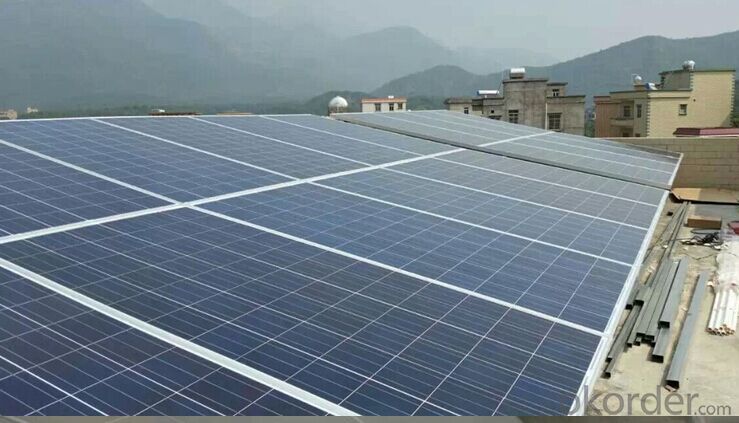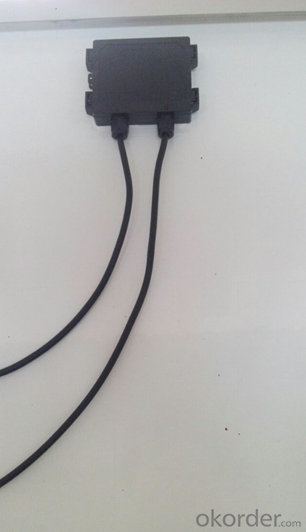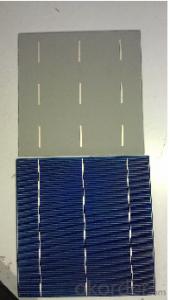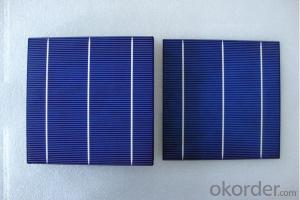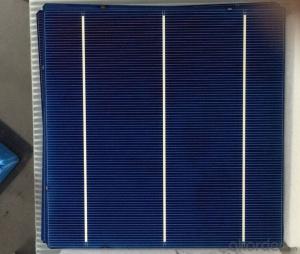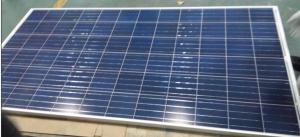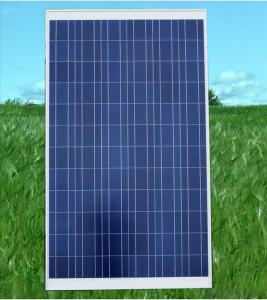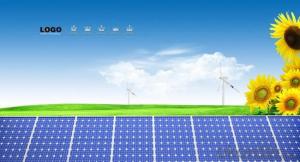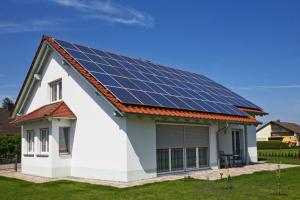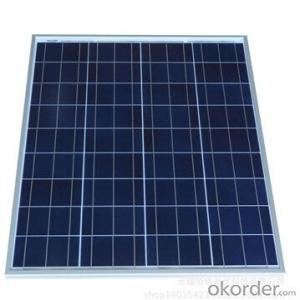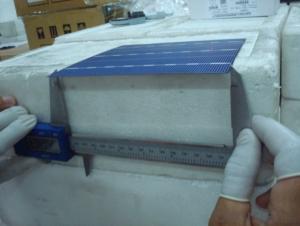250W Graphene Enhanced Poly Silicon Solar Module with High Quality CNBM
- Loading Port:
- Qingdao
- Payment Terms:
- TT OR LC
- Min Order Qty:
- 10 set
- Supply Capability:
- 300000 set/month
OKorder Service Pledge
OKorder Financial Service
You Might Also Like
Quick Details
| Place of Origin: | China (Mainland) | Brand Name: | CNBM | Model Number: | 285W solar module |
| Material: | Polycrystalline Silicon | Size: | 1956*992*50mm | Number of Cells: | 72 |
| Max. Power: | 285W | Cell Size(mm): | 156*156 | Tolerance: | 0~3% |
| Cells Number(pcs): | 6*12 | Weight(Kg): | 25 | Max.Series Fuse Rating (A): | 15 |
| Max.System Voltage-IEC(V): | 1000 |
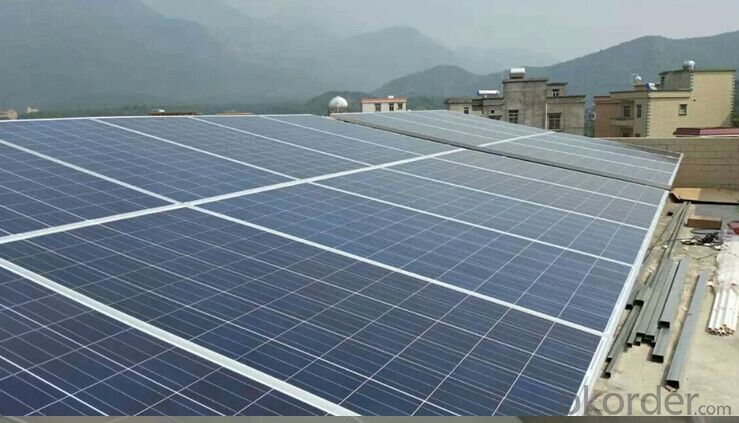
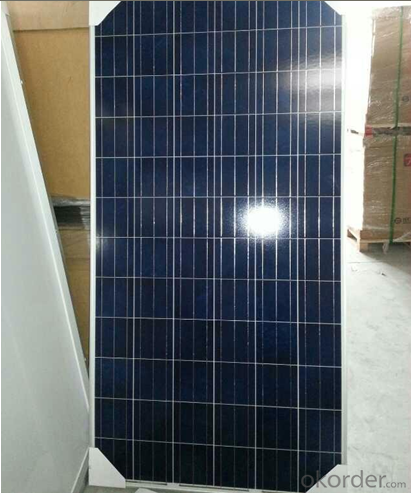
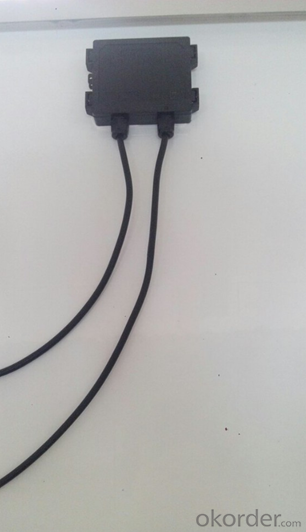
Polycrystalline Solar Module
XH250P(72)/ XH275P(72)/ XH300P(72)
Models | XH250P(72) | XH285P(72) | XH300P(72) |
Max. Power (Pmax) | 250Wp | 285Wp | 300Wp |
Optimum Operating Voltage (Vm) | 34.8V | 35.7V | 35.9V |
Optimum Operating Current (Im) | 7.18A | 7.77 A | 8.08A |
Open-circuit Voltage (Voc) | 43.8V | 35.4 V | 44.4V |
Short-circuit Current (Isc) | 8.04A | 8.24 A | 8.62A |
Cells efficiency | 14.6% | 15.8% | 16.8% |
Dimension L×W×H (mm) | 1956×992×50mm | 1956×992×50 | 1956×992×50 |
Power Tolerance (Pmax) | 0 ~ +3% | 0 ~ +3% | 0 ~ +3% |
Numbers of cells | 60pcs poly solar cell 156×156mm | 72pcs poly solar cell 156×156mm | 72pcs poly solar cell 156×156mm |
weight | 25kg | 25kg | 25kg |
Max system voltage | 1000V DC | 1000V DC | 1000V DC |
Temperature cycling range | -40℃ ~ +85℃ | -40℃ ~ +85℃ | -40℃ ~ +85℃ |
- Q: How do solar cells convert sunlight into electricity?
- Solar cells convert sunlight into electricity through a process called the photovoltaic effect. When sunlight hits the solar cell, the photons from the sunlight energize the electrons in the cell's semiconductor material, causing them to break free from their atoms. This creates an electric current, which can then be harnessed and used as electricity.
- Q: Can solar cells be used in aircraft applications?
- Yes, solar cells can be used in aircraft applications. They can be integrated into the structure of an aircraft to generate electricity from sunlight, which can power various onboard systems such as lighting, communication equipment, and navigation instruments. Additionally, solar cells can also be used to charge batteries in electric aircraft or unmanned aerial vehicles (UAVs), extending their flight time and reducing reliance on traditional fuel sources.
- Q: Can solar cells be used for powering sports stadiums?
- Yes, solar cells can be used for powering sports stadiums. Solar panels can be installed on the roofs or surrounding areas of stadiums to harness solar energy and convert it into electricity. This renewable energy source can help power various systems within the stadium, such as lighting, scoreboards, electronic displays, and even charging stations. Additionally, excess energy generated by the solar cells can be stored in batteries for use during nighttime events or periods of low sunlight. Using solar cells in sports stadiums not only reduces carbon emissions but also offers long-term cost savings by decreasing reliance on traditional energy sources.
- Q: Can solar cells be used to power medical devices?
- Yes, solar cells can be used to power medical devices. Solar cells, also known as photovoltaic cells, convert sunlight into electricity. This renewable energy source can be harnessed to power various medical devices such as portable glucose monitors, prosthetics, hearing aids, and even small medical implants. Using solar cells to power medical devices offers a sustainable and convenient solution, especially in remote areas or during emergencies where access to electricity may be limited.
- Q: Can solar cells be used for powering communication towers?
- Yes, solar cells can be used for powering communication towers. Solar energy can be harnessed using photovoltaic cells, which convert sunlight into electricity. These cells can generate power throughout the day, making them a reliable source of energy for communication towers that require continuous operation. Additionally, solar cells can be integrated with batteries to store excess energy for use during nighttime or cloudy periods, ensuring uninterrupted power supply to communication towers.
- Q: Can the solar powered cells really work better than the normal cells?
- There is no doubt that the solar powered cells work better than the normal cells, the only disadvantage is the cost of making it.
- Q: Can solar cells be used to power remote disaster response systems?
- Yes, solar cells can be used to power remote disaster response systems. Solar cells are a reliable and sustainable source of energy, especially in areas where access to electricity may be limited or disrupted due to natural disasters. By harnessing the sun's energy, solar cells can provide power for various critical systems such as communication equipment, lighting, medical devices, and water purification systems in remote disaster-stricken areas. This helps in facilitating efficient and effective disaster response efforts, enabling responders to provide crucial aid and support to affected communities.
- Q: Can solar cells be used in powering remote weather stations?
- Yes, solar cells can be used to power remote weather stations. Solar cells convert sunlight directly into electricity, making them an ideal and sustainable power source for remote locations where access to the electrical grid may be limited or non-existent. The solar panels can be installed on the weather station's roof or nearby, providing a constant supply of renewable energy to run the station's sensors, data loggers, and communication systems.
- Q: Can solar cells be used in off-grid cabins or cottages?
- Yes, solar cells can definitely be used in off-grid cabins or cottages. Solar cells, also known as photovoltaic cells, convert sunlight into electricity, making them an excellent renewable energy source for remote locations. By harnessing the power of the sun, solar cells can generate electricity to power lights, appliances, and other electrical devices in off-grid cabins or cottages, allowing for a sustainable and independent energy solution.
- Q: Are there any library or exhibition halls where I can show students at school how the solar cells works?
- Well, it is hard to say when there would be one talking about solar cells.
Send your message to us
250W Graphene Enhanced Poly Silicon Solar Module with High Quality CNBM
- Loading Port:
- Qingdao
- Payment Terms:
- TT OR LC
- Min Order Qty:
- 10 set
- Supply Capability:
- 300000 set/month
OKorder Service Pledge
OKorder Financial Service
Similar products
Hot products
Hot Searches
Related keywords


